Hip Replacement Surgery
The complete guide
Surgical approaches to hip replacement
There is more than one approach to perform a hip replacement, this means that there is no “perfect surgical approach.” Each approach has advantages and disadvantages.
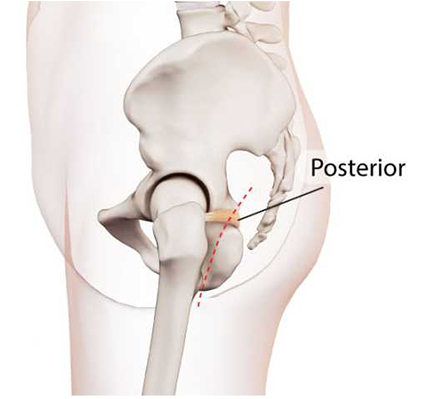
Posterior Approach
The posterior approach, historically predominant, remains widely used in US surgeries. Surgeons access the hip joint through a side incision, the muscles on the back of the hip joint needs to be detached an re-attached onto bone. Refinements over time have minimized tissue invasion, reduced incision size, and lessened muscle trauma, ensuring safety and shorter hospital stays.
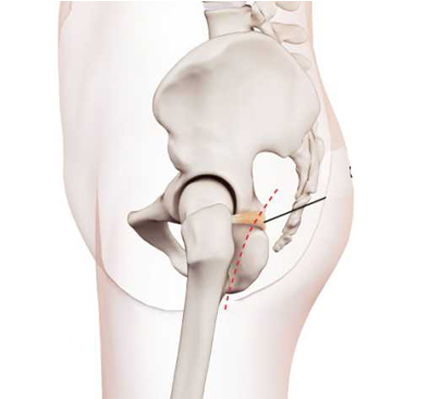
The side of the hip
By cutting through the very important gluteus muscle on the side of the hip. Dr Manjra does not commonly employ this approach for this reason.
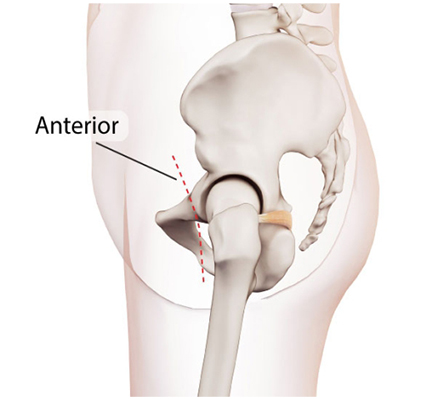
Anterior Approach
This is a minimally invasive approach that is achieved by moving the muscles to the side without cutting them. This results in less pain and quicker recovery. The direct anterior approach (DAA) has been used to some degree since the 1980s and it has gained popularity in recent years. The incision is made in the front of the hip, rather than on the side. Use of this approach requires special training and is the preferred approach of Dr Manjra.
Hip Replacement Components
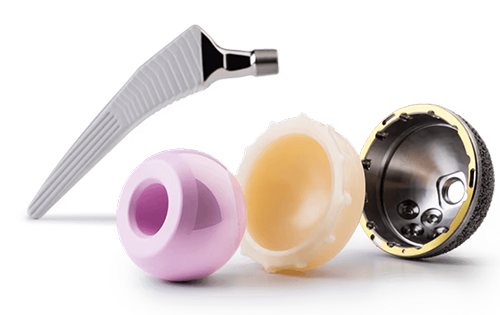
Preparation before surgery
These are general lifestyle and health checks required as soon as you have decided to go for surgery
You have decided to go ahead with surgery, preparation will require some lifestyle changes which will:
- Reduce your risk of complications
- Improve long-term health
- Prevent serious illness while you recover
This will involve blood tests and medical clearance.
Smokers: Stop smoking to reduce complications
and improve long-term health.
Maintain a healthy weight to lower the risk of
complications.
Engage in regular exercise after consulting the
healthcare team or your GP.
Control blood sugar levels if diabetic.
Medication & Supplement Disclosure
Your healthcare team will need to know off all the chronic and medication
- Blood-thinning medication
- Herbal and complementary remedies
- Dietary supplements
- Over the counter medication.
If you are female
The healthcare team may do a pregnancy test as
some procedures involve x-rays or medications that can be harmful to unborn babies. Sometimes the test does not show an early-stage pregnancy so let the healthcare team know if you could be pregnant.
Prepare your home for after surgery
Arrange furniture strategically for improved mobility
Remove potential tripping hazards such as throw rugs, wires, and unsupportive furniture.
Stay mindful of uneven floors and steps.
Choose chairs with arms and high, firm seats for better support.
Keep frequently used items within easy reach.
Ensure comfortable, easy-to-remove clothing
Use nonslip strips in the bath or shower.
install a raised toilet seat.
Consider confining pets to specific areas to minimize the risk of falls.
Use a carry-along bag for walker or crutches.
Hip Replacement Procedure
Pre-Surgery Process
1. Consultation and Imaging
Schedule a consultation with Dr. MA Manjra. Complete required X-rays.
2. Pre-Surgery Tests and Clearance
Complete blood tests and obtain medical clearance from the anaesthetist.
3. Decision Making
Decide to proceed with the surgery.
4. Family Meeting
Arrange a meeting with family to address any
concerns about the surgery if required.
5. Authorization and Quotes
Obtain authorization from your medical aid or request a quote if you are a private patient.
Be aware that medical aid plans may require
additional reports or motivations, potentially delaying the surgery.
6. Surgery Date Confirmation
Confirm the scheduled date for the surgery.
7. Medication Instructions
Confirm when to stop taking blood-thinning
medications (e.g., Aspirin, Ecotrin, Warfarin, Plavix). Note: Failure to stop these medications in time may result in the surgery being postponed.
8. Fasting Instructions
- Fast (no food) for 6 hours prior to surgery.
- You may drink clear liquids (tea or coffee without milk, clear apple juice) up to 2.5 hours beforesurgery.
The Day Of Surgery
After Admission
Checks will be performed to ensure the correct
operation on the right side
Confirm your name and procedure with the
surgeon.
Keep warm around the time of operation,
informing the healthcare team if you feel cold.
If you are female the healthcare team may do a
pregnancy test
Anaesthetist
Your anaesthetist will discuss anesthesia for before and after surgery
The Operation
You may be given antibiotics during the
operation to reduce the risk of infection.
The operation usually takes 60 to 90 minutes
Hip Replacement Surgical Procedure
Your surgeon will make an incision and remove the damaged ball and socket of your hip.
The implant is fixed into the bone using acrylic
cement or special coatings that bond directly to
the bone.
They will then insert an artificial joint made of
metal, plastic, ceramic, or a combination of these
materials
Your surgeon will close your skin with stitches or
clips.
Recovery after surgery
In Hospital
After the operation you will be transferred to
the recovery area and then to the ward
You will usually have an x-ray to check the
position of your hip replacement.
Good pain relief is important to help you to
recover. If you are in pain, let the healthcare
team know.
The healthcare team will tell you if you need to
have any stitches or clips removed, or dressings
changed.
Keep your wound dry for 4 to 5 days, and use a
waterproof dressing when you have a bath or
shower
The health care team will give you medication to
control the pain and it is important that you take
it as you are told so you can move about as
advised.
Scarring of your skin, although hip-replacement
wounds usually heal to a neat scar
It is common for your leg to be swollen after a
hip replacement. It can take up to a year for the
swelling to go down.
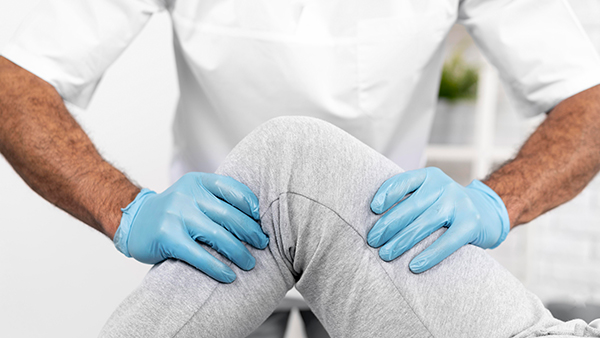

Physiotherapy in hospital
Getting out of bed and walking is an important
part of your recovery.
The physiotherapist will help you to start
walking using crutches or a walking frame,
usually on the day of surgery or the next day.
Your surgeon or the physiotherapist will tell you
how much weight you can put on your leg.
Returning to normal activities
To reduce the risk of a blood clot, make sure you
carefully follow the instructions of the
healthcare team if you have been given
medication or need to wear special stockings.
The healthcare team will tell you when you can
return to normal activities.
To reduce the risk of problems, it is important to
look after your new hip as you are told.
You will need to use walking aids until you can
walk well without them.
Regular exercise should help you to return to
normal activities as soon as possible.
Do not drive a car or ride a bike until you can
control your vehicle, including in an emergency
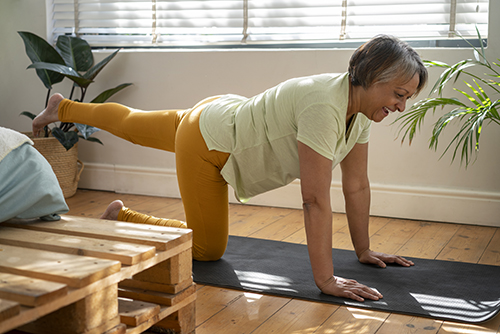
Living with a Hip Replacement
A hip replacement can wear out with time. This depends on your body weight and how active you are
What happens if I don’t have surgery?
Arthritis can be debilitating
Chronic use of pain medication
You will develop adverse side effects from chronic use of pain medication such as addiction, dependency, stomach ulcers, kidney and/or liver problem
Hip replacement surgery is Cardioprotective
Arthritis, heart disease and diabetes: Hip replacement surgery is *cardioprotective (protects against premature death due to heart attack or stroke) Multiple large scale have shown a strong relationship between having hip and/or knee arthritis and your risk of getting a heart attack or stroke.
* Multiple large scale studies in Canada and the United Kingdom including a study published within the prestigious British Medical Journal
